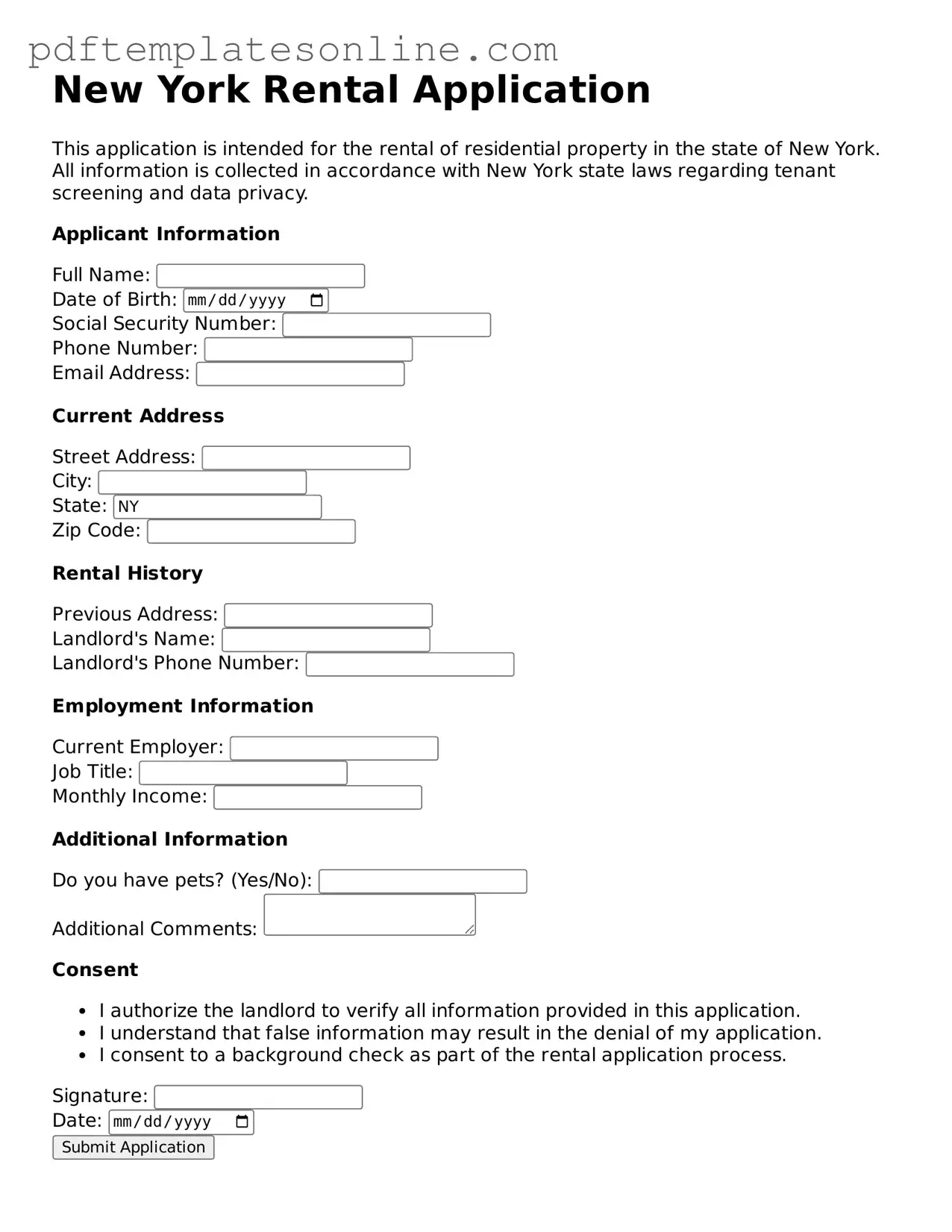Filling out a New York Rental Application form can be straightforward, but many applicants make common mistakes that can delay the process or lead to rejection. One frequent error is providing inaccurate personal information. For example, applicants may misspell their names or provide the wrong Social Security number. This can raise red flags for landlords and property managers.
Another mistake is failing to disclose all sources of income. Some applicants may only list their primary job, neglecting to include additional income from side jobs or investments. This omission can result in a lower perceived financial stability, which may affect the rental approval.
Inadequate references are also a common issue. Applicants sometimes forget to ask their references for permission or provide outdated contact information. Landlords typically check references to verify rental history and reliability, so it is crucial to ensure that references are current and willing to respond.
Some applicants neglect to read the application thoroughly before submission. Important sections may be overlooked, leading to incomplete information. This can cause delays in processing the application and may even lead to outright rejection.
Additionally, many people do not provide adequate documentation to support their application. Required documents may include pay stubs, bank statements, or previous rental agreements. Failing to submit these documents can hinder the landlord's ability to assess the application properly.
Another common mistake is not being honest about rental history. Applicants may attempt to hide negative rental experiences, such as evictions or late payments. However, landlords often conduct background checks that will reveal this information, which can damage credibility.
Some applicants also overlook the importance of a cover letter. A brief letter can provide context to the application and express genuine interest in the property. Without it, applicants may miss an opportunity to make a positive impression.
Inconsistent information is another issue. When applicants provide different details in various sections of the application, it can raise suspicion. Consistency is key to building trust with landlords.
Lastly, procrastination can lead to mistakes. Waiting until the last minute to complete the application can result in rushed answers and overlooked details. Taking the time to fill out the application carefully is essential for success.
